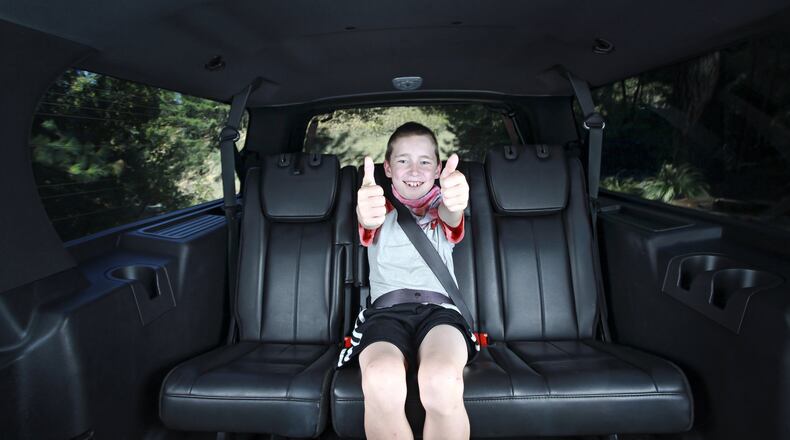In addition to sitting with feet on the dashboard, slouching in the seat or not wearing both the shoulder belt and lap belt are common and dangerous practices among kids. “If a child is only wearing the lap belt during a crash, the body folds in half, kind of like a taco, and the seat belt goes into the soft tissue of the abdomen,” says Schwing. “All of the energy transfer from the crash will go to this single abdominal line, resulting in injuries such as ruptured bowels, broken lumbar spines and pancreatic lacerations as well as head injuries.”
So how do you make sure your child is seated safely in the car? Follow these tips:
1. Children should sit in the back seat until they are the size of an adult or the age of 13. If they are not adult size at 13, remain in the back seat.
2. Children who are 4 years and younger or weigh less than 40 pounds should be in a five-point harness car seat.
3. When too big for the car seat, kids should be in a booster seat until they are 4 foot 9 inches tall, normally between 8 and 12 years of age. Booster seats better align the child with the seat and shoulder belts, so they cross properly at bony parts of the body that can better withstand an impact, instead of vital organs.
4. Once out of a car seat or booster seat, children should sit facing forward and upright, with both lap and shoulder belt in place.
Dayton Children’s offers car seat appointments for those needing their child’s car seat checked. Call the Family Resource Connection at 937-641-3700 to set up an appointment.
This look at a children’s health or safety issue comes from Dayton Children’s Hospital. Email: newsroom@childrensdayton.org.
About the Author
